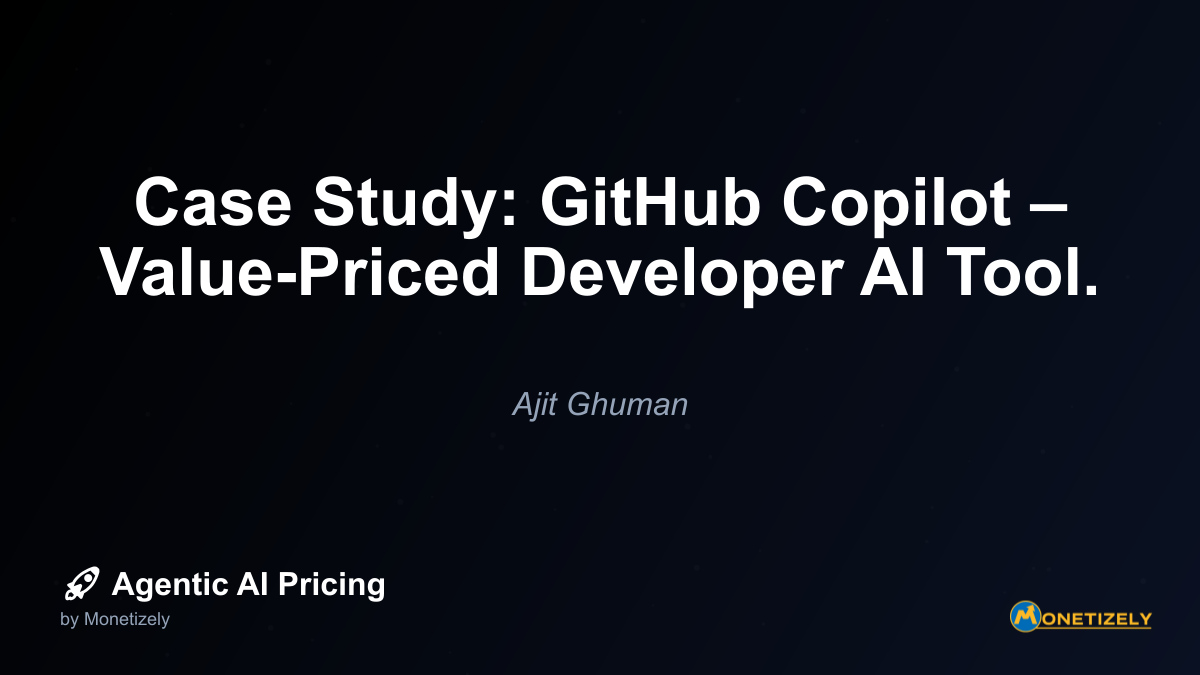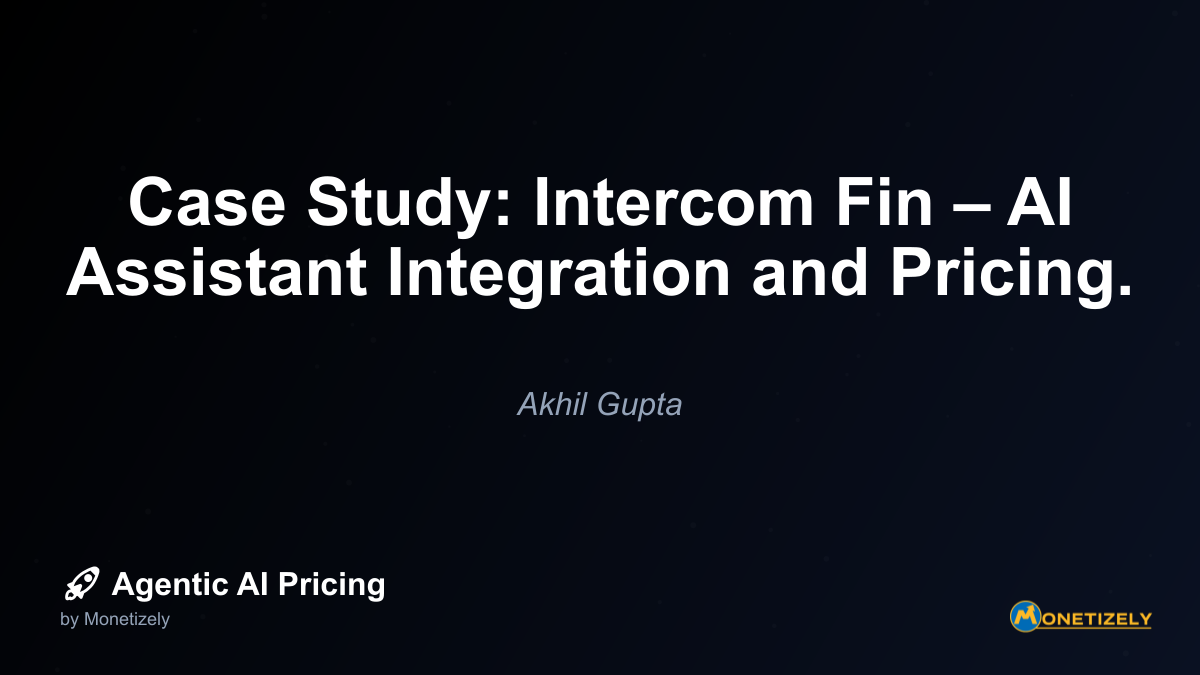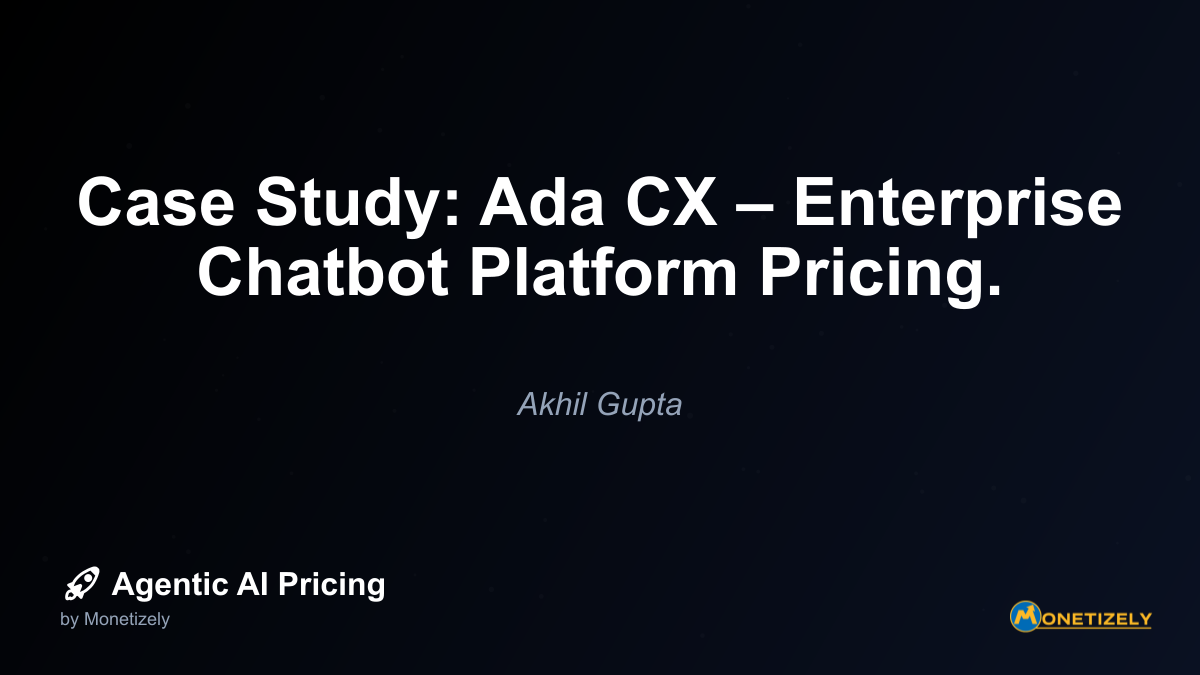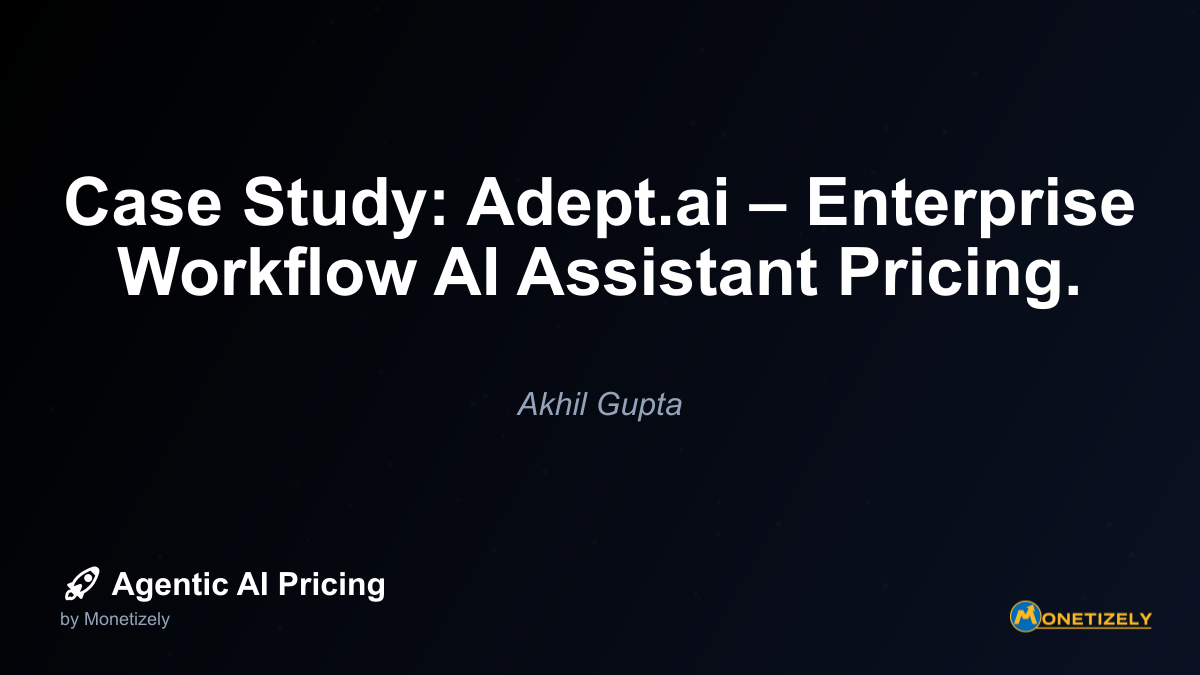· Ajit Ghuman · Case Studies · 8 min read
Case Study: GitHub Copilot – Value-Priced Developer AI Tool.
AI and SaaS Pricing Masterclass
Learn the art of strategic pricing directly from industry experts. Our comprehensive course provides frameworks and methodologies for optimizing your pricing strategy in the evolving AI landscape. Earn a professional certification that can be imported directly to your LinkedIn profile.

- Network effects: The more developers who use Copilot, the more valuable the GitHub ecosystem becomes
- Data advantages: Increased usage provides more training data to improve the product
- Platform stickiness: Developers who integrate Copilot into their workflow are less likely to leave GitHub’s ecosystem
- Competitive positioning: The affordable price creates a barrier to entry for potential competitors
Microsoft, as GitHub’s parent company, likely views Copilot as a strategic investment rather than a standalone profit center. By creating an accessible price point, they’ve positioned Copilot to become the default AI coding assistant for millions of developers worldwide.
2. Flat Subscription vs. Usage-Based Pricing
In contrast to many AI tools that employ usage-based pricing (paying per token, query, or computation time), GitHub Copilot opted for a simple flat monthly fee. This decision offers several advantages:
- Predictability for users: Developers know exactly what they’ll pay each month, regardless of usage
- Simplicity in messaging: No need to explain complex usage metrics or pricing tiers
- Encouragement of heavy usage: With no usage limits, developers can integrate Copilot deeply into their workflow without worrying about costs
- Administrative ease: Easier budgeting and procurement approval in enterprise settings
The flat subscription model works particularly well for Copilot because the tool is designed to be used continuously throughout the development process. Unlike some AI applications where usage might be sporadic, Copilot aims to be an ever-present assistant during coding sessions.
3. Business vs. Individual Pricing Differentiation
The modest price difference between individual ($10/month) and business ($19/month) subscriptions reveals a thoughtful approach to market segmentation:
- The individual price is low enough to be an easy personal expense for professional developers
- The business price includes necessary enterprise features while remaining affordable enough that managers don’t need extensive ROI justification
- The price gap is small enough that companies are unlikely to encourage developers to use personal accounts for work
This approach ensures both individual developers and businesses can adopt the tool without significant financial barriers, while still capturing higher revenue from commercial users who typically have more resources and derive greater economic value from the tool.
Value Perception: Why Developers Willingly Pay
What makes GitHub Copilot’s pricing strategy particularly effective is how it relates to the perceived value provided to developers. Let’s examine the key factors that make the price point feel like a bargain to many users:
1. Productivity Gains Exceed Cost
For professional developers earning anywhere from $60,000 to $200,000+ annually, a $10-19 monthly subscription represents a tiny fraction of their salary. If Copilot saves even 15-30 minutes of development time per week, it easily pays for itself.
Studies and user testimonials suggest the productivity gains can be substantially higher:
- Faster implementation of routine code patterns
- Reduced time spent on documentation lookups
- Decreased context switching between coding and reference materials
- Accelerated learning of new languages or frameworks
A GitHub-commissioned study claimed developers completed tasks 55% faster when using Copilot - though independent research suggests more modest but still significant gains of 20-30% for certain types of tasks.
2. Cognitive Load Reduction
Beyond raw productivity, Copilot reduces the mental effort required during programming:
- Suggesting boilerplate code that would otherwise require tedious typing
- Providing implementations for algorithms that would require mental recall
- Offering multiple solution approaches to consider
- Handling syntax details so developers can focus on higher-level logic
This cognitive benefit is harder to quantify but represents significant value for developers who experience less mental fatigue during the workday.
3. Learning Acceleration
For junior developers or those learning new technologies, Copilot serves as an educational tool:
- Suggesting idiomatic patterns in unfamiliar languages
- Demonstrating best practices through generated code
- Providing working implementations that can be studied and modified
- Offering alternative approaches to solving problems
This educational aspect creates additional perceived value, particularly for developers early in their careers or those transitioning to new technology stacks.
Examining Copilot’s Pricing Strategy Through Different Lenses
To fully appreciate GitHub Copilot’s pricing approach, we should analyze it from multiple strategic perspectives:
Economic Analysis: Cost Structure vs. Pricing
GitHub Copilot’s underlying technology - a large language model specialized for code generation - incurs significant costs:
- Model training: The initial development of Codex required substantial computing resources
- Inference costs: Each code suggestion requires computational resources to generate
- Ongoing improvement: Continuous refinement of the model requires additional training
- Infrastructure: Reliable, low-latency global service delivery
Despite these costs, GitHub maintains a relatively low price point. This suggests either:
- Exceptional efficiency in their infrastructure
- Strategic subsidization by Microsoft to capture market share
- A long-term view that scale and ecosystem effects will eventually justify the investment
- Using Copilot as a loss leader to strengthen the overall GitHub platform
Most likely, it’s a combination of all four factors, with Microsoft viewing Copilot as a strategic investment rather than expecting immediate profitability.
Competitive Positioning: Preemptive Market Capture
When Copilot launched, it had few direct competitors. By establishing an aggressive price point early, GitHub:
- Created a reference price in consumers’ minds
- Set expectations for what AI coding assistants should cost
- Made it difficult for new entrants to charge significantly more
- Built a large user base before competitors could establish themselves
This approach follows classic market penetration strategy - setting prices low to rapidly capture market share before competition intensifies. As the market matures and competitors like Amazon CodeWhisperer and various startups enter the space, GitHub’s established position gives them significant advantages.
User Segmentation: Addressing Different Markets
The three-tier approach (free for students/open source, individual, and business) effectively segments the market:
- The free tier builds goodwill in the developer community and helps train future paying customers
- The individual tier captures professional developers spending their own money
- The business tier captures enterprise value with appropriate feature differentiation
This segmentation allows GitHub to capture different willingness-to-pay across user groups while building a broad user base.
Business Results and Market Impact
While GitHub doesn’t disclose specific revenue figures for Copilot, public statements and industry analysis suggest strong adoption:
- In June 2023, GitHub reported that over 1.3 million developers had paid for Copilot
- At an average of approximately $10-19 per month, this suggests annual recurring revenue of $150-300 million
- More importantly, Copilot has become deeply integrated into many developers’ workflows, creating strong platform lock-in
The tool’s success has triggered a wave of AI coding assistants, including:
- Amazon’s CodeWhisperer
- Tabnine
- Replit’s Ghostwriter
- Various IDE-specific implementations
However, Copilot’s early market entry, robust capabilities, and aggressive pricing have given it a substantial lead in developer mindshare and adoption.
Key Pricing Lessons from Copilot for Other AI Products
GitHub Copilot’s pricing strategy offers several valuable lessons for companies developing agentic AI products:
1. Value-Based Pricing Trumps Cost-Plus
Rather than pricing based on the considerable costs of developing and running the AI model, GitHub priced Copilot based on the value it delivers to developers. This value-based approach recognizes that customers care about outcomes, not the underlying technology costs.
Value-based pricing for AI products requires:
- Deep understanding of user workflows and pain points
- Quantification of the economic benefit your AI provides
- Recognition of psychological factors that influence purchase decisions
- Competitive awareness of alternative solutions (including non-AI approaches)
2. Simplicity Enhances Adoption
The flat monthly fee model removes friction from the purchasing decision:
- No need to estimate usage or worry about surprise bills
- Easy to understand and budget for
- Simple to communicate in marketing
- Reduces procurement complexity in organizations
For many AI products, especially those used regularly rather than sporadically, subscription pricing may be preferable to usage-based models despite the industry trend toward the latter.
3. Strategic Subsidization Can Be Valid
Microsoft likely subsidizes Copilot to some degree to achieve strategic objectives:
- Strengthening the GitHub ecosystem
- Collecting valuable training data
- Building developer loyalty to Microsoft’s broader platform
- Creating barriers to entry for competitors
For companies with complementary products or platforms, pricing an AI tool below standalone profitability can make strategic sense if it strengthens the overall ecosystem or provides valuable data.
4. Segment Appropriately But Keep It Simple
Copilot’s three-tier approach (free, individual, business) provides just enough segmentation without creating unnecessary complexity:
- Clear eligibility criteria for each tier
- Minimal price differential between tiers to reduce procurement friction
- Appropriate feature differentiation for business needs
This balanced approach captures different willingness-to-pay without creating a complex pricing structure that might impede adoption.
Potential Future Pricing Evolutions
As Copilot matures and the competitive landscape evolves, we might expect several potential pricing adjustments:
1. Tiered Functionality
Currently, the main differentiation between individual and business plans involves administrative features rather than core functionality. Future iterations might introduce premium capabilities for higher tiers:
- Advanced customization options
- Integration with proprietary codebases
- Team collaboration features
- Custom model fine-tuning
2. Industry-Specific Versions
Different programming domains have distinct needs and economic values. GitHub might eventually offer specialized versions:
- Copilot for Data Science
- Copilot for Web Development
- Copilot for Enterprise Applications
- Copilot for Mobile Development
These specialized versions could command different price points based on the specific value they deliver to each segment.
3. Usage Limits or Tiers
If inference costs remain significant, GitHub might eventually introduce some form of usage limitation:
- Basic tier with monthly usage caps
- Premium tier with unlimited usage
- Overage charges for exceeding limits
However, this approach would sacrifice the simplicity that has been a key advantage of Copilot’s current pricing model.
4. Enterprise Customization
For large organizations, GitHub could offer custom pricing with:
- Volume discounts
- Private model instances trained on proprietary code
- Enhanced security and compliance features
- Integration with enterprise development processes
This enterprise approach would allow for value capture from large organizations while maintaining accessibility for individual developers.
Conclusion: The Strategic Genius of Copilot’s Pricing
GitHub Copilot’s pricing strategy demonstrates sophisticated thinking about the AI tool marketplace. By pricing for adoption rather than maximizing short-term revenue, GitHub has established Copilot as the default AI coding assistant for millions of developers worldwide.
The approach balances several competing objectives:
- Generating sustainable revenue
- Driving rapid adoption
- Creating ecosystem lock-in
- Positioning strategically against competitors
- Building a valuable data asset
For other AI product leaders, Copilot offers a masterclass in strategic pricing. The key takeaway is that pricing is not merely about covering costs or maximizing short-term revenue - it’s a strategic lever that influences adoption, usage patterns, competitive positioning, and long-term platform value.
As agentic AI tools continue to proliferate across industries, those that follow Copilot’s example of aligning price with user value rather than underlying technology costs will likely see the most successful market adoption. The future of AI pricing isn’t about charging for impressive technology - it’s about charging for tangible outcomes that users value.
Co-Founder & CEO
Ajit is the author of Price To Scale, a top book on SaaS Pricing and is the Founder of Monetizely. Ajit has led and worked in pricing and product marketing at firms like Twilio, Narvar and Medallia. His work has been featured in Forbes and VentureBeat. Ajit regularly consults with software companies from Seed stage to post-IPO on pricing strategy. Ajit is also a highly-rated co-instructor for 'The Art of SaaS Pricing and Monetization' on Maven.
Pricing Strategy Audit
Let our experts analyze your current pricing strategy and identify opportunities for improvement. Our data-driven assessment will help you unlock untapped revenue potential and optimize your AI pricing approach.




